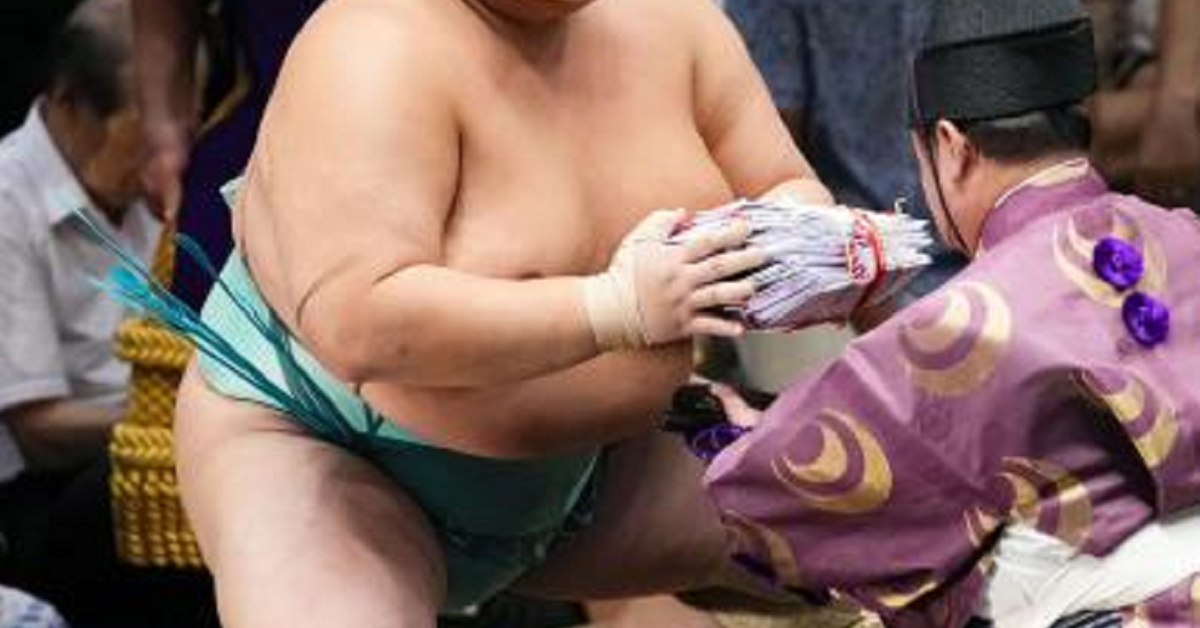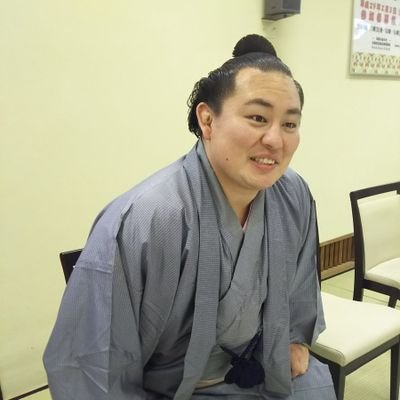After a sumo bout, the winning wrestler performs a unique motion called “tegatana wo kiru” (cutting with a hand blade).
It is far more than a simple gesture—it embodies gratitude to the gods, respect toward the opponent, and appreciation for the spectators.
This quiet movement reflects both the pride of a sumo wrestler and the spiritual depth of Japanese culture.
What Is “Tegatana wo Kiru”?
“Tegatana wo kiru” refers to the ritual gesture made by a victorious sumo wrestler right before receiving the prize money from the referee. The wrestler shapes his hand like a sword and moves it through the air three times—toward the East, the West, and the Center.
This act is far more than a simple gesture; it is a sacred expression of gratitude and purification.
Sumo originated as a Shinto ritual, and the ring, or dohyo, is considered a sacred space. Thus, every movement in sumo carries meaning, and this particular motion represents the wrestler’s thanks to the gods, respect toward his opponent, and appreciation toward the audience.
| Order | Direction | Meaning |
|---|---|---|
| 1 | East | Respect and gratitude toward the opponent |
| 2 | West | Thanks to the spectators and supporters |
| 3 | Center | Prayer and gratitude to the gods |
The gesture of tegatana is not an act of pride but an expression of appreciation. The quiet motion of the wrestler’s right hand reflects a mix of relief after the battle and a lingering sense of sanctity.
The Flow of the Tegatana Gesture
When a wrestler receives the prize money, each step of his movement is deliberate, and every motion represents respect.
- The referee (gyoji) approaches the winner with the prize envelope.
- The wrestler extends his left hand to prepare to receive it.
- With his right hand shaped like a blade, he cuts the air three times—East, West, and Center.
- He then accepts the envelope and bows deeply before leaving the ring.
Among these steps, the most important aspect is the calm and quiet movement. Even after a fierce match, the wrestler performs the gesture with composure. This serenity symbolizes the Japanese sense of courtesy and dignity.
| Motion | Symbolic Meaning | Expressed Spirit |
|---|---|---|
| Cutting motion | Purification and gratitude | Sanctity and humility |
| Receiving the prize | Ritual of appreciation | Spirit of offering |
| Bowing | Completion of courtesy | Respect and gratitude |
In this short sequence, there is no wasteful movement. Every motion is polished and filled with meaning, embodying centuries of tradition and discipline.
Cultural Meaning Behind the Gesture
Sumo was originally performed as a ritual to pray for a rich harvest. Thus, the tegatana gesture made after a match carries meanings that transcend winning or losing—it is a prayer and an offering of gratitude.
Modern sports often celebrate victory with cheers and emotional expressions. In contrast, sumo values “the beauty of stillness”—the idea that true strength lies in humility. The gesture of tegatana perfectly represents this “quiet strength”.
| Comparison | Other Sports | Sumo’s Tegatana |
|---|---|---|
| Expression of victory | Shows excitement and joy | Shows gratitude and respect |
| Purpose of movement | Display of pride | Expression of reverence to the divine |
| Audience impression | Energy and passion | Calmness and dignity |
While not flashy, the tegatana gesture radiates inner strength and refined beauty, reflecting the depth of Japanese aesthetics and spirituality.
The Appeal of Tegatana to Foreign Audiences
For many international spectators, the tegatana gesture leaves a profound impression. After the intensity of the match, the sudden quiet moment, the composed movement, and the deep bow all convey Japan’s spirit of respect and harmony.
In many countries, athletes celebrate victory with loud joy. In contrast, sumo wrestlers demonstrate “the beauty of silent victory.”
Through the tegatana, foreign viewers can clearly perceive Japanese values such as humility, gratitude, and respect, recognizing sumo as not just a sport but a form of spiritual culture.
| Visitor Impression | Reason |
|---|---|
| Sacred and graceful | The gestures are calm and deliberate |
| Culturally rich | Reflects respect, gratitude, and humility |
| Emotionally soothing | The stillness after the bout feels sacred |
Thus, the tegatana serves as a universal language of respect, transcending cultural boundaries and conveying Japan’s moral spirit to the world.
The Relationship Between Tegatana and Prize Money
Prize money (kensho-kin) is offered by companies or sponsors to honor the wrestlers’ performance. Before receiving it, the wrestler performs tegatana to thank the gods and his opponent.
This sequence highlights that the spirit of gratitude outweighs material reward—an attitude deeply rooted in Japanese culture.
| Item | Description |
|---|---|
| Meaning of prize money | A token of appreciation from sponsors |
| Purpose of tegatana | To express gratitude and purification |
| Sequence | Tegatana → Receiving → Bowing |
| Represented spirit | Humility, respect, and appreciation |
Even in the face of victory, the wrestler does not boast of his success but first shows gratitude. This humble gesture serves as a moral reminder that appreciation should precede reward.
The Connection Between Courtesy and Tegatana
In sumo, there is a saying: “Courtesy begins and ends the match.”
The bout starts with a respectful bow and ends with tegatana and another bow. This continuous expression of courtesy shows that sumo values mutual respect and divine gratitude beyond competition.
Through this repetition of reverence, sumo transcends mere physical contest and becomes a spiritual art form.
The single movement of tegatana contains the essence of the Japanese heart—humility, harmony, and gratitude.
Conclusion
The gesture of tegatana embodies the beauty and spirit of sumo. Rather than showing pride, the winning wrestler expresses gratitude and respect toward the gods, the opponent, and the spectators.
This act captures the core of Japanese culture—the spirit of courtesy.
After the intensity of combat, the still moment when a wrestler performs tegatana reflects humility, sincerity, and thankfulness.
When watching sumo, pay attention to this quiet moment—it reveals the deep tradition and spirituality that make sumo unique.





コメント